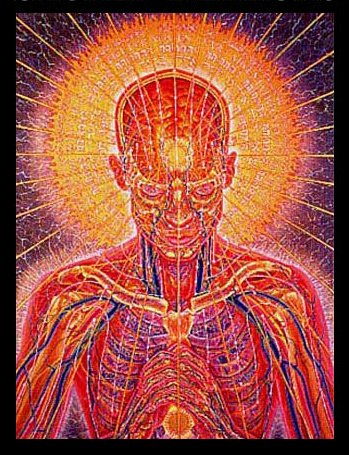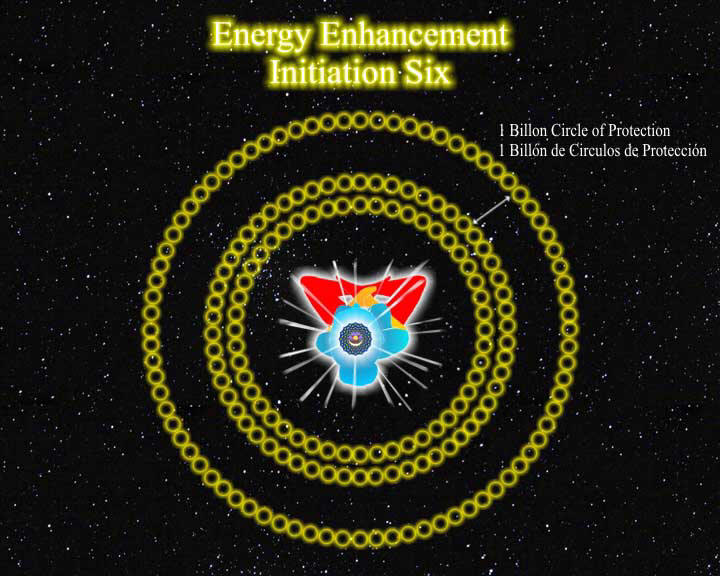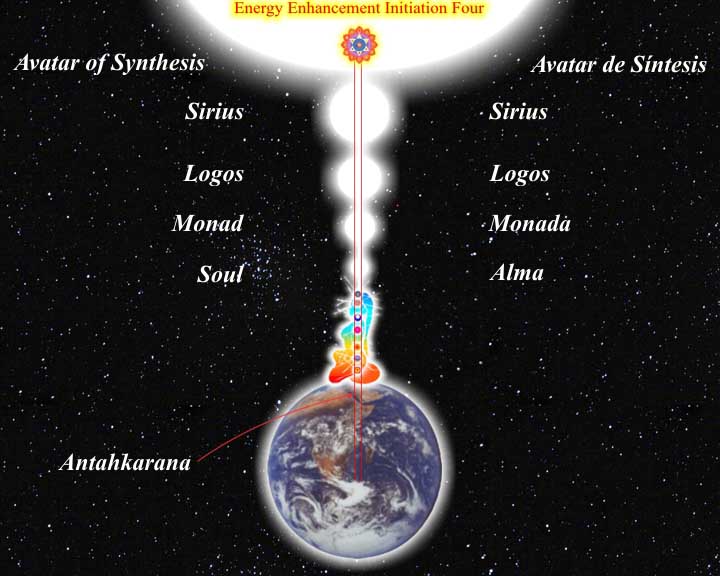




|
ENERGY
|
GAIN ENERGY
APPRENTICE
LEVEL1
|
THE
ENERGY BLOCKAGE REMOVAL
PROCESS
|
THE
KARMA CLEARING
PROCESS
APPRENTICE
LEVEL3
|
MASTERY
OF RELATIONSHIPS
TANTRA
APPRENTICE
LEVEL4
|
2005 AND 2006
|
PsychopathTHE MASK OF SANITYSection 3: Cataloging the MaterialPart 1: Orientation28. Clarifying the approach
|
28. Clarifying the approach In spite the difficulties that have been discussed, efforts to study the psychopath have proceeded. No drastic change in the official psychiatric attitude has occurred, and no step has been taken to make it possible to deal satisfactorily with the disorder by medical methods. But information has been accumulating that may someday bring this about. The studies of Partridge have been valuable in focusing attention on the type of patient who needs attention as a separate entity rather than in a confused group. In his writing can be found a discernible and well-presented clinical picture. Partridge's three general types include only psychopaths, and the relatively modest distinctions among them impress us as valid rather than imaginary. Here, too, we find a clear rejection of the time-honored assumption that psychopaths are marked by gross physical defects and "stigmata of degeneration" and that this disorder has been satisfactorily related to inborn defects. This valuable contribution, though largely ignored by many authorities, merits recognition today.233-236 Long ago, when the psychopath was, even more than at present, confusingly submerged in a nonspecific category (known only by terms applied also to a wide variety of gross physical defect states), Healy and those who worked with him began to emphasize the purposive or reactive nature of antisocial behavior.9,124-125 Careful attention was given to the emotional deprivations and distortions of aim that lay behind maladapted acts, and evidence of influences essentially psychogenic were noted and evaluated. In work with juvenile delinquents, Healy pointed out that under similar 238 THE MASK OF SANITY conditions of insecurity or emotional deprivation one child might show anxiety and passive withdrawal and another, aggressive mischief, apparently in response to the personal stress. These observations have been helpful over the years in efforts to interpret and to deal with behavior disorder. Although relatively neglected for a long period by those concerned with interpretive or causal as contrasted with simply descriptive formulations, the psychopath received attention from Alexander, who makes an interesting contrast between ordinary neurosis, in which repressed impulses find a symbolic or substitutive expression in subjectively unpleasant symptoms, and character neurosis, in which the unconscious drives are believed to appear in maladapted objective behavior. In both disorders unconscious conflict is postulated. In orthodox neurosis this conflict may give rise to conscious anxiety without visible source, or impulses (repressed and ungratified) may be manifested indirectly by displacement (as in obsessions and compulsions), or otherwise (as in conversion paralysis and anesthesia). In character neurosis, according to Alexander, unconscious impulses obtain a degree of fulfillment in another manner, by a pattern of pathologic behavior in which apparently purposeless and sometimes selfdefeating and social acts are carried out persistently. This pattern is followed despite penalties and in the absence of adequate conscious incentive.9,11,12 This formulation has attracted much popular interest. Alexander maintained, and many of his followers still maintain, that antisocial conduct often represents an unconscious but purposive effort to obtain punishment in order to expiate and gain relief from (unconscious) feelings of guilt. As a hypothesis this is indeed ingenious and appealing. It has attracted many adherents. I have not been able, however, to discover such a sense of guilt or remorse (conscious or unconscious) in any of the psychopaths I have studied. Nor have I seen any convincing evidence of such unconscious guilt revealed in the work of Alexander or of other observers who accept his formulation. Such guilt is often assumed but, so far as I know, never demonstrated. I must therefore remain skeptical of this popular interpretation, however pleasant it might be to solve the problem of the psychopath by an interpretation so simple and so graceful. The more experience I have had with psychopaths, the stranger it has seemed to me that a theory should insist that they have such deep and influential unconscious feelings of guilt when they are at the same time so plainly callous and free from remorse about grievous wrongs and crimes that they clearly recognize as their own. It strikes me as a quaint fantasy to assume without real evidence that they unconsciously go to such pains to obtain punishment and win redemption for unknown sins when they plainly and glibly ignore responsibility for every known misdemeanor and CATALOGING THE MATERIAL 239 felony and pride themselves in evading penalties and in flouting the basic principles of justice. The term neurotic character adopted by Alexander to designate the psychopath, although it may be of value in suggesting belief in a psychogenic: etiology, is not conducive to progress in dealing with our problem. This point has been well emphasized by Karl Menninger in a discussion of the practical need of a new official name for the psychopath.208 As pointed out by Menninger, the word character in such a use offers possibilities of confusion, if one patient has a neurotic character and another a neurotic personality, then just what is a character? And just what is a personality? And just how do they differ? There is, we may emphasize again, a considerable possibility of arousing the ghosts of a faculty psychology in the use of these terms. Menninger makes another point in speaking of neurotic character that I believe is of essential importance. "The condition" he writes, "is closer to a psychosis than to a neurosis and the term neurotic is, therefore, misleading."208 A helpful study of the psychopath by Henderson presented in the Salmon Lectures (1938) and subsequently published128 called attention to the seriousness of the problem. From this presentation the reader is able to get clear ideas about actual patients as they appear clinically and the need for better methods of handling them. Over a period of several decades Karpman also called attention to the psychopath, pointing out how little serious effort has been made by psychiatrists to understand or to deal with the essential problem. He maintained that psychogenic factors are responsible for the behavior disorder in many instances and believed that most patients classified as psychopathic personality should be called neurotic. A small residue of patients for whom he proposed the term anethopath, are, in Karpman's opinion, essentially unlike the others in that they are disabled by intrinsic defect rather than by dynamic psychopathologic reactions. 160-164 In these studies the very great egocentricity, the inability to form any important or binding attachment to another, the failure ever to realize and grasp the very meaning of responsibility, all features that I believe to be most essential, are emphasized by Karpman and made clear as seldom done in other literature on the psychopath. It is doubtful if anyone else has done more to elucidate this psychopathologic picture and similar antisocial behavior disorders. In the system of classification that prevailed when the first two editions of this book were prepared, the diagnosis of psychopathic personality was listed among those conditions considered as being "without mental disorder." 240 THE MASK OF SANITY In the New York State Department of Mental Hygiene Outlines for Psychiatric Care the general term was subdivided as follows:225
· With pathologic sexuality. Indicate symptomatic manifestations, e.g.:
homosexuality, erotomania, sexual perversion, sexual immaturity.
· With pathologic emotionality. Indicate symptomatic manifestations, e.g.:
schizoid personality, cyclothymic personality, paranoid personality, emotional
instability.
· With asocial or amoral trends. Indicate symptomatic manifestations, e.g.:
antisociality, pathologic mendacity, moral deficiency, vagabondage,
misanthropy.
· Mixed types. The first division, pathologic sexuality, will be discussed in Chapters 37 and 59. Suffice it to say here that only the last term, sexual immaturity, has been characteristic of our group. In the second division, pathologic emotionality, the schizoid, cyclothymic, and paranoid personalities are regarded as relatively mild and relatively static deviations of the same types familiar in schizophrenia, manic depressive psychosis, and paranoid psychosis. Their disorder or disability is very different clinically from that discussed in this volume. The typical psychopath shows little or no indication of suffering from a deviation in the direction of such a disorder as schizophrenia, manic-depressive psychosis, or paranoia but shows a disorder quite different. Characteristic schizoid or cyclothymic traits are not discernible features of the psychopath. Although psychopaths tend to blame their troubles on others, they do not, like patients with real paranoid deviation, organize and persistently follow out highly purposive plans or hold tenaciously to strong affective attitudes. Emotional instability is, in a shallow sense, applicable to the psychopath, but this quality scarcely seems an outstanding or fundamental deviation. Many, as a matter of fact, show less evidence of anxiety, uneasiness, and other reactions implied by emotional instability than the average person. The descriptive terms included in the third category apply in varying degrees to many of the patients discussed here, but these scarcely seem either broad enough or deep enough to be of value as diagnostic formulations. Under one term, psychopathic personality, we find grouped many types of disorder. These disorders have very little in common. One thing that has been presumed about some of them, that is, that they are relatively trivial as contrasted with extremely disabling conditions, we grant, so far as schizoid personality, cyclothymic personality, and paranoid personality are concerned. This characteristic of being an incomplete degree of various sorts of disorder we deny as applying to the subject of this volume. Only by a manipulation CATALOGING THE MATERIAL 241 of verbal abstractions can such disorders be identified with the specific disorder shown by those regularly called psychopaths. In the 1952 revision of the Diagnostic and Statistical Manual14 we find the general term personality disorders used to designate all the various items formerly listed under psychopathic personality-all these and several more.
Personality pattern disturbance
Inadequate personality
Schizoid personality
Cyclothymic personality
Paranoid personality
Personality trait disturbance
Emotionally unstable personality
Passive-aggressive personality
Compulsive personality
Personality trait disturbance, other
Sociopathic personality disturbance
Antisocial reaction
Dyssocial reaction
Sexual deviation; specify supplementary term
Addiction
Alcoholism
Drug addiction
Special symptom reaction
Learning disturbance
Speech disturbance
Enuresis
Somnambulism
Other
Gross stress reaction
Adult situational reaction
Adjustment reaction of infancy
Adjustment reaction of childhood
Habit disturbance
Conduct disturbance
Neurotic traits
Adjustment reaction of adolescence
Adjustment reaction of late life [p. 71]
defined:14
profiting neither from experience nor punishment, and maintaining no real loyalties to any
person, group, or code. They are frequently callous and hedonistic, showing marked
emotional immaturity, with lack of sense of responsibility, lack of judgment, and an ability
to rationalize their behavior so that it appears warranted, reasonable, and justified.
The term includes cases previously classified as "constitutional psychopathic state" and
"psychopathic personality." As defined here the term is more limited, as well as more
specific in its application. [p. 38] 242 THE MASK OF SANITY Here the familiar psychopath could be accurately and officially classified. It seems to me regrettably confusing that under the same general heading of personality disorders there were still listed such astonishingly unallied minor difficulties as learning disturbance, speech disturbance, enuresis, and somnambulism. Since the 1952 revision of the psychiatric nomenclature just mentioned and since the fourth edition of the Mask of Sanity (1964) another revision of our official terminology was made. The following classifications is given in this latest revision (1968):15 V. PERSONALITY DISORDERS AND CERTAIN OTHER NON-PSYCHOTIC MENTAL DISORDERS (301-304)
.0 Paranoid personality
.1 Cyclothymic personality (Affective personality
.2 Schizoid personality
.3 Explosive personality
.4 Obsessive compulsive personality (Anankastic personality)
.5 Hysterical personality
.6 Asthenic personality
.7 Antisocial personality
.81 Passive-aggressive personality
.82 Inadequate personality
.89 Other personality disorders of specified types
[.9 Unspecified personality disorder] [pp. 9-10] In this classification we find a more distinct place for our subject than in the earlier schemes of classification. Here the psychopath is officially designated as personality disorder, antisocial type, a recognizable entity in a fairly large group of different and distinct disorders. It is perhaps in silent recognition of the absurdities that prevailed for so long in our official categories that psychiatrists in practice wtill avail themselves of th emore or less slang term which is sort of nickname for our subject. When one psychiatrist on the staff of a state hospital, or at a meeting of the American Psychiatric Association, expresses to another some though he has about the psychopath, it is immediately and plainly understood that he is not making reference to schizoid disorder or to sexual deviation per se but to a disorder nearly all psychiatrists recognize and recognize as distinct from the heterogeneous mess of unrelated disorders with which it was for so long officially listed. There is nothing vague about these patients clinically. Their course of conduct can be predicted with much greater accuracy than that of patients with defined psychoses. Attempts to discuss this type of patient and to use the approved term CATALOGING THE MATERIAL 243 personality disorder in its official meaning were until recently likely to be neither clear nor accurate. In fact, it was difficult not to talk nonsense if one bore in mind all the things that term was recognized as including. The currently approved category personality disorder, antisocial type, seems to offer an accurate term and to avoid the great confusion promoted by earlier schemes of classification. It is probable, however, that the older unofficial term psychopath will maintain its currency for a long time. All experienced psychiatrists are used to it, and few, if any, are likely to be misled by it. |
Energy Enhancement Enlightened Texts Psychopath The Mask Of Sanity
Section 3, Part 1
|